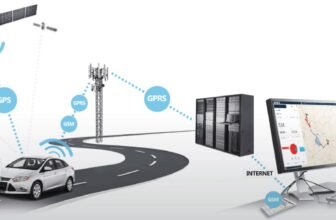
Exploring Different Types of Satellite Technology and How They Work
Satellites have become an integral part of modern life, providing services ranging from global communication to weather forecasting. These sophisticated devices orbit the Earth, gathering and transmitting data that supports countless industries and applications. Satellite technology is incredibly diverse, with various types of satellites designed for specific purposes. In this post, we delve into the different types of satellite technology and explore how they work.
1. Communication Satellites
Communication satellites are one of the most well-known types of satellites. They facilitate global communication by transmitting signals over vast distances.
How They Work:
- Transponders: Communication satellites are equipped with transponders, which receive signals from Earth, amplify them, and retransmit them back to designated locations.
- Frequency Bands: These satellites operate across different frequency bands, such as C-band, Ku-band, and Ka-band, to provide reliable communication services.
- Geostationary Orbit: Most communication satellites are placed in geostationary orbit, approximately 36,000 kilometers above the equator. This ensures they remain fixed over a specific location, enabling consistent signal coverage.
Applications:
- Television and radio broadcasting
- Internet services
- Telephone and mobile communication
- Military communication
2. Weather Satellites
Weather satellites play a crucial role in meteorology, providing data that helps forecast weather patterns and monitor climate changes.
How They Work:
- Imaging Sensors: Weather satellites are equipped with advanced imaging sensors that capture data in visible, infrared, and microwave spectra.
- Polar and Geostationary Orbits:
- Polar-orbiting satellites circle the Earth from pole to pole, providing detailed global coverage.
- Geostationary satellites stay over a fixed position, offering real-time weather monitoring for specific regions.
- Data Transmission: The collected data is transmitted to ground stations, where it is processed to generate weather models and forecasts.
Applications:
- Tracking hurricanes, storms, and other severe weather events
- Monitoring atmospheric temperature and humidity
- Analyzing long-term climate trends
3. Navigation Satellites
Navigation satellites are the backbone of global positioning systems (GPS) and other satellite-based navigation solutions.
How They Work:
- Triangulation: Navigation satellites transmit precise timing signals. By measuring the time it takes for these signals to reach a receiver, the receiver can calculate its distance from multiple satellites.
- Satellite Constellations: Systems like GPS, GLONASS, Galileo, and BeiDou consist of constellations of satellites to ensure global coverage.
- Medium Earth Orbit (MEO): Most navigation satellites operate in medium Earth orbit, approximately 20,000 kilometers above the Earth’s surface.
Applications:
- Navigation for vehicles, ships, and aircraft
- Precision agriculture
- Mapping and geolocation services
- Disaster management and search-and-rescue operations
4. Earth Observation Satellites
Earth observation satellites are designed to monitor and study the Earth’s surface and environment.
How They Work:
- Multispectral Imaging: These satellites use multispectral and hyperspectral imaging to capture data across various wavelengths.
- Synthetic Aperture Radar (SAR): Some Earth observation satellites are equipped with SAR, which can capture high-resolution images regardless of weather conditions or time of day.
- Low Earth Orbit (LEO): Most Earth observation satellites are positioned in low Earth orbit, typically between 500 and 2,000 kilometers above the Earth’s surface.
Applications:
- Monitoring deforestation and land use
- Tracking natural disasters like floods and earthquakes
- Studying urban development and infrastructure
- Analyzing changes in glaciers, oceans, and ecosystems
5. Scientific Satellites
Scientific satellites are used for research and exploration, contributing to our understanding of space and fundamental sciences.
How They Work:
- Specialized Instruments: These satellites are equipped with instruments tailored to their specific missions, such as telescopes, spectrometers, and particle detectors.
- Orbit Types: Depending on their objectives, scientific satellites may operate in low Earth orbit, geostationary orbit, or even escape Earth’s gravity to travel into deep space.
- Data Collection: They gather data about celestial objects, cosmic radiation, and other scientific phenomena.
Applications:
- Studying planets, stars, and galaxies
- Measuring cosmic microwave background radiation
- Researching space weather and solar activity
- Supporting theoretical physics and cosmology
6. Military Satellites
Military satellites are deployed for defense and intelligence purposes, offering strategic advantages to nations.
How They Work:
- Surveillance and Reconnaissance: Equipped with high-resolution cameras and radar, these satellites monitor military activities and other strategic interests.
- Secure Communication: Military satellites provide encrypted communication channels for armed forces.
- Early Warning Systems: Some satellites are designed to detect missile launches and other potential threats.
Applications:
- Intelligence gathering and espionage
- Monitoring troop movements and activities
- Supporting battlefield communication
- Detecting ballistic missile launches
7. Astronomy Satellites
Astronomy satellites are designed to observe celestial phenomena and advance our understanding of the universe.
How They Work:
- High-Precision Instruments: These satellites are equipped with advanced instruments like X-ray detectors, gamma-ray telescopes, and ultraviolet sensors.
- Space-Based Observatories: Operating beyond Earth’s atmosphere, these satellites avoid interference from air and light pollution, enabling clearer observations.
- Orbit Choices: Some astronomy satellites operate in highly elliptical orbits or Lagrange points to optimize observation conditions.
Applications:
- Discovering exoplanets and studying their atmospheres
- Observing black holes and neutron stars
- Mapping cosmic structures and dark matter
- Investigating the origins of the universe
8. CubeSats and Small Satellites
CubeSats and small satellites represent a new wave of cost-effective and versatile satellite technology.
How They Work:
- Standardized Design: CubeSats are built using standardized units, typically measuring 10x10x10 cm (1U).
- Miniaturized Components: Advances in technology enable small satellites to carry sophisticated payloads despite their compact size.
- Deployment: These satellites are often launched as secondary payloads alongside larger missions.
Applications:
- Educational and research purposes
- Technology demonstrations
- Earth observation and remote sensing
- Low-cost communication networks
9. Environmental Monitoring Satellites
Environmental monitoring satellites specialize in tracking changes in the Earth’s environment and ecosystems.
How They Work:
- Spectral Imaging: These satellites use spectral imaging to monitor vegetation, soil, water bodies, and air quality.
- Global Coverage: Positioned in low Earth orbits, they provide frequent updates on environmental conditions worldwide.
- Collaboration: Many of these satellites are part of international collaborations to address global challenges like climate change.
Applications:
- Measuring greenhouse gas concentrations
- Monitoring deforestation and desertification
- Tracking marine pollution and coral reef health
- Assessing the impact of human activities on biodiversity
10. Space Exploration Satellites
Space exploration satellites venture beyond Earth’s orbit to explore the solar system and beyond.
How They Work:
- Interplanetary Missions: These satellites are designed to travel to other planets, moons, and celestial bodies.
- Autonomous Systems: Equipped with advanced guidance and propulsion systems, they operate independently over vast distances.
- Data Relay: They transmit data back to Earth using high-gain antennas and powerful communication systems.
Applications:
- Studying planetary atmospheres and surfaces
- Searching for signs of extraterrestrial life
- Mapping asteroids and comets
- Preparing for human exploration of other planets
Satellite technology continues to evolve, pushing the boundaries of what is possible in communication, observation, and exploration. From enabling instant global communication to unraveling the mysteries of the cosmos, satellites have become indispensable tools in our quest for knowledge and progress. As technology advances, the potential applications of satellites will only grow, driving innovation and fostering a deeper understanding of our world and the universe beyond.





